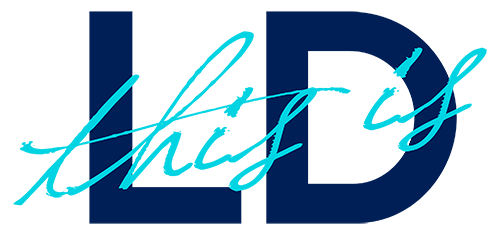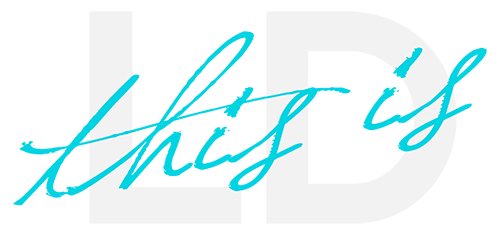Facebook PPC Case Study: How to Craft the Ultimate Strategy
CASE STUDY
The Factors
To test effectively, we must understand which factors are in flux. The following components must be considered when designing ads:
- The Ad Targeting
- The Ad Text
- The Ad Imagery
Get this combination right and you’ll definitely see results. Remember, to stand out from the crowd and to make sure that your ads don’t drown in an endless river of content, they need to click. Target them to the right people, write the right copy, use tasteful images, and you’re golden.
The Strategy
At LD, we often use a 3x3x3 Strategy.
This entails using three unique targeting capabilities, three unique text variations, and three unique images. The results are 27 ads, by which you can clearly isolate the most effective variable (for example you will end up with ads: 1a,1b,1c, 2a, 2b, 2c, and so on).
From here simply note which variables are driving users to your desired conversion. With this strategy, approximately 2 weeks of data, and as little as $500 in ad spend, you can make optimization decisions based on which ads resonate the most with your target audience.
It’s a simple, easy-to-use strategy that clearly shows your winning assets.
The Psychology of FB Ads
When designing these variables, it is important to make a distinction that Facebook ads are in fact a form of disruptive marketing. While Adwords is often based around the search intent of the user, Facebook ads require the targeted user to stop and pay attention to your ad. If it is not compelling, however, you will not receive any attention, thereby driving your CTRs (click-through rates) lower, your CPCs (cost-per-click) higher, and dropping your conversion numbers. As such, it is vital to capture the user’s attention as they scroll through their news feed.
The following steps take place in disrupting the user’s attention away from trivial FB activities and towards your ad:
- First, the user notices the ad image
- Then reads the main headline text
- Then reads the text body
- Then reads the description section
- Then clicks the CTA (Call-to-Action) button
With all that in mind, let’s see how you can reach your desired target market with your pay-per-click strategy. It all comes down to targeting!
Targeting Best Practices
The reason why Facebook is a multi-billion dollar company is that it can efficiently use its users’ data and serve it up to marketers for a cost. The secret sauce is that marketers can serve up branded messaging, to almost any target market, age, gender, demographic, or interest group in the world.
As an example, let’s say we ran a campaign for a Bridal company that sold mid-high end wedding dresses in Chicago. Using Facebook within the United States, it would be possible to target women who:
- Are 18 to 35 years old
- Live in Chicago
- Are getting married within the next year
- Are interested in Bridal products
- Have an annual income of $60K plus.
With targeting like that, it’s easy to see why this data is so powerful for marketers. (See #2 in this article to see how to target by Life Event)
When it comes to splicing and dicing the targeting parameters, one of the most powerful methods is using existing customer lists (i.e. Email Subscribers). By uploading this data to Facebook, you’re allowing the software to match user emails (and names, city, etc.) with their FB profiles.
This makes it possible for you to run an email campaign that sends promotions to your corporate email subscribers and then also use this data to run a parallel campaign to the same users using ads.
Hitting the same user with multiple touchpoints is always a good tactic.
It is also possible within your pay-per-click strategy to create a Look-a-Like Audience that mirrors this customer list we just mentioned. This is effective as it allows you to find new users that have similar demographics and psychographics to your existing customers. It’s like finding more of your target market on Facebook!
Another method involves installing an FB Pixel (FB’s Tracking Code) on your corporate website. This will allow you to target users who have already visited your website and thus know your brand and will be closer to purchase or your desired conversion.
Other popular methods of targeting include:
- People who like your corporate page
- Friends of people who like your corporate page
- People who have engaged with your posts in the past 365 days
- Job titles
- Employers
Interests - Demographics (Age, gender, etc)
- Income Level
- Geography
To gauge which targeting parameters yield the best conversions for your business, you need to start testing, keep testing, and test some more. Just remember, it is vital to always optimize towards conversions, not clicks or likes or any other vanity metric. Making optimization decisions based on conversions will help drive your bottom line! It is, of course, possible to combine each of the above targeting methods with one another. As such, the combinations are endless when it comes to targeting.
A word of advice, however: make sure the targeting is not too broad (or you will be wasting spend on people who aren’t interested) and not too narrow (or your ads may not run, or be seen too often by the same users thereby increasing CPCs.). Facebook has a neat little meter to show you if your targeting is too broad or too specific. Depending on the product or service you are marketing, somewhere in the 25K-400K people is generally a good rule of thumb.
Text Best Practices
When it comes to writing the actual language for your ad, it’s often beneficial to use common, everyday vocabulary. Although you do not want to sound childish, some marketers suggest writing like your audience is, in fact, a 5th grader. People don’t want to be reading an essay or deciphering big words when it comes to ads. Here are some tips for writing effective copy.
That being said, an effective tactic in your Facebook pay-per-click strategy can be to use buzzwords. These are words that are interesting, have phonetic uniqueness, or generally just grab the user’s attention. You want them to pop off the page, and make the ad compelling. Some examples could include: phenomenal, nasty, tragic, shocking, rapid, unbelievable, etc. The use of slang is also encouraged as it can work in your favor to connect you with the audience.
When possible, create a sense of scarcity or limited quantity with your offer. Making the product or service hard to get or only available for a limited time helps to drive rapid conversion. When writing the ad it is also important to stick to character limits so that the ad is properly displayed on its respective placements (i.e. mobile, Instagram, sidebar, instant articles, audience network, etc.). Here is an example of ad copy (with character length) that LD crafted for a depression treatment center, with great results:
- Headline (25 Characters): TMS Brings Real Hope for Depression
- Copy (90 Characters): FDA-approved TMS treats depression without meds, or their nasty side effects. Patient success rate is phenomenal.
- CTA/Description (30 Characters): Schedule a free consultation today.
Imagery Best Practices
When it comes to deciding on imagery for your ad within your PPC strategy, it needs to be eye-catching. Without this, the user will glance over it without a second thought. Remember, Facebook imagery functions as disruptive marketing, so it needs to catch your attention. The goal is to make the user stop and consider your offer, or else the ad is not effective. To do so, images need to be striking, captivating, or shocking. That being said, be tasteful when it comes to this, and make sure the images are brand-aligned. Also, high-quality images are a must, as anything blurry or grainy will not be well received.
In our Facebook pay-per-click strategy, we like to use people’s faces. We have found that for some clients, showing emotion on a real person’s face is highly effective in connecting with the humanity of the audience. Sometimes the emotion is happy and uplifting, and sometimes it is somber and depressing. If you want to convey emotion, in our experience it is best done with real people facing the photographer. We have also found that using bright colors in the image disrupts a user’s attention towards our offer.
Here are the Imagery specifications from FB themselves:
https://www.facebook.com/business/ads-guide/image
The ads we craft for our clients perfectly encompass the best practices that we preach, and earn plenty of social likes, comments, and shares.
That’s the beauty of social platforms like Facebook — they open up countless opportunities to interact directly with your audience. No other advertising medium beats the exposure that social media provides.
The Final Word
Back Yourself With An Expert Full-Service Marketing Team
AGENCY HIRE
AGENCY HIRE
Great Choice!
CONSULTANT
CONSULTANT
Great Choice!
If You're Ready to Party, We'll Bring All The Snacks.
We’re available 24 hrs a day and we are more responsive than a Formula 1 car. Get in touch to start your project today!

